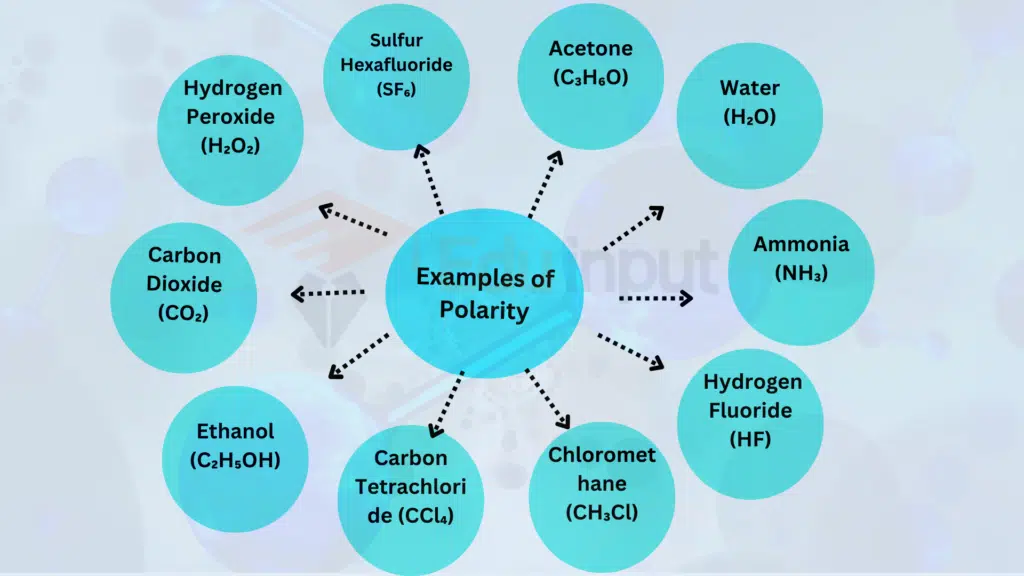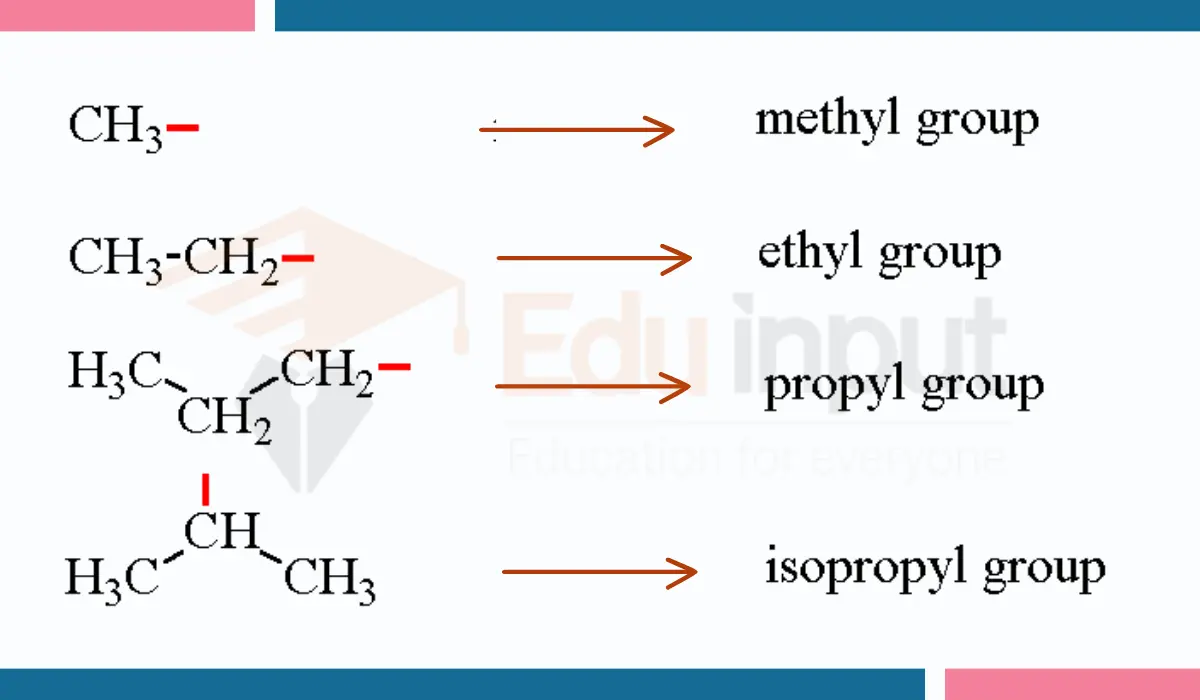20 Examples of Polarity
Polarity is a fundamental concept in chemistry that refers to the distribution of electric charge within a molecule. This property is crucial in understanding the behavior of molecules in various chemical interactions. In this article, we’ll explore 20 different examples of polarity, examining the structures of molecules and their implications in different conditions.
Examples of Polarity
Here are 20 Examples of Polarity:

1. Water (H₂O)
Water is a very common example of a polar molecule. The oxygen atom has a higher electronegativity than hydrogen, leading to an uneven distribution of charge. This polarity gives water its unique properties, such as a high surface tension and the ability to dissolve various substances.
2. Ammonia (NH₃)
In ammonia, the nitrogen atom attracts electrons more strongly than the hydrogen atoms, creating a dipole moment. This polarity contributes to ammonia’s role as a polar solvent and its participation in hydrogen bonding.
3. Hydrogen Fluoride (HF)
Hydrogen fluoride is a polar molecule due to the electronegativity difference between hydrogen and fluorine. This polarity makes HF a strong acid and a valuable industrial chemical.
4. Chloromethane (CH₃Cl)
Chloromethane exhibits polarity because of the electronegativity difference between carbon, hydrogen, and chlorine. This molecule is used as a refrigerant and solvent.
5. Carbon Tetrachloride (CCl₄)
Although carbon tetrachloride has polar bonds, its tetrahedral geometry results in a nonpolar molecule. This lack of overall polarity contributes to its nonreactive nature.
6. Ethanol (C₂H₅OH)
Ethanol is a polar molecule due to the electronegativity difference between oxygen and hydrogen. This polarity allows ethanol to dissolve in water and function as a versatile solvent.
7. Carbon Dioxide (CO₂)
Carbon dioxide is a linear molecule with symmetrical polar bonds. However, the molecule is nonpolar overall due to its symmetrical geometry, which affects its properties and interactions.
8. Hydrogen Peroxide (H₂O₂)
Hydrogen peroxide has a bent molecular structure, resulting in a net dipole moment. This polarity influences its reactivity and makes it a powerful oxidizing agent.
9. Sulfur Hexafluoride (SF₆)
Sulfur hexafluoride is a nonpolar molecule despite containing polar covalent bonds. Its symmetrical octahedral geometry leads to a cancelation of dipole moments.
10. Acetone (C₃H₆O)
Acetone is a polar molecule due to the electronegativity difference between oxygen and carbon. This polarity allows acetone to mix with both polar and nonpolar substances, making it a versatile solvent.
11. Methanol (CH₃OH)
Methanol is a polar molecule with a bent molecular structure. This polarity makes it soluble in water and contributes to its use as an industrial solvent.
12. Nitrogen Dioxide (NO₂)
Nitrogen dioxide exhibits polarity due to the presence of polar covalent bonds. This molecule is involved in air pollution and atmospheric chemistry.
13. Formaldehyde (CH₂O)
Formaldehyde is a polar molecule with a trigonal planar structure. This polarity influences its role in various chemical processes, including its use in embalming.
14. Bromine Trifluoride (BrF₃)
Bromine trifluoride is a polar molecule due to its asymmetric molecular structure. This compound is used in various chemical synthesis reactions.
15. Dimethyl Ether (CH₃OCH₃)
Dimethyl ether is a polar molecule with a bent structure. Its polarity contributes to its use as a refrigerant and as a propellant in aerosol products.
16. Phosphorus Pentachloride (PCl₅)
Phosphorus pentachloride exhibits polarity due to the polar nature of its chlorine-phosphorus bonds. This compound is involved in various chemical reactions, including the synthesis of inorganic chemicals.
17. Ozone (O₃)
Ozone is a polar molecule with a bent molecular structure. Its polarity contributes to its role in the stratosphere, absorbing and scattering ultraviolet radiation.
18. Hydrogen Sulfide (H₂S)
Hydrogen sulfide is a polar molecule with a bent structure. Its polarity influences its properties, including its characteristic rotten egg smell.
19. Carbon Monoxide (CO)
Carbon monoxide is a polar molecule due to the electronegativity difference between carbon and oxygen. Its polarity contributes to its toxicity and its role in atmospheric chemistry.
20. Sulfur Dioxide (SO₂)
Sulfur dioxide is a polar molecule with a bent structure. Its polarity influences its role in air pollution and its interaction with other atmospheric components.




Leave a Reply